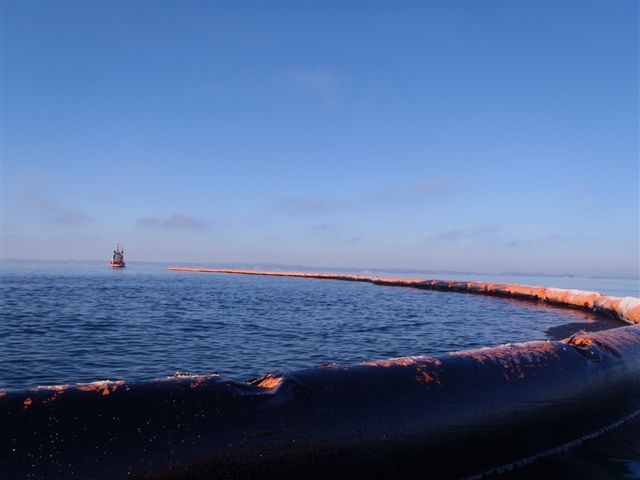Oil spill response includes many of the same elements as normal personal insurance, it's a good idea to be prepared for the worst – even if risk is minor.
Calculations show that the likelihood of uncontrolled blowouts is very low. According to the Norwegian Petroleum Directorate (NPD), the probability of a blowout from a fully drilled, larger reservoir during exploration is estimated at one in 10,000 boreholes. The likelihood that things could go wrong during drilling of production wells is even lower. It is far more likely that a tanker runs aground along the Norwegian coast causing a major oil spill.
Oil spill response in Norway is a professional collaboration between operators looking for oil, and the state, represented by the Norwegian Coastal Administration (NCA). The latter has overall responsibility for all oil spill response in Norway and through inter-municipal committees for acute pollution (IUA).
The operators' response
Private response, the operating companies' own response, must be scaled to handle emergencies arising as a result of their own activities. The Norwegian Clean Seas Association for Operating Companies (Nofo) handles the operating companies' oil spill response in Norway. Nofo has contingency depots with oil booms and skimmers located from Stavanger in the south to Hammerfest in the north.
Inter-Municipal Response
Inter-municipal response is scaled to handle acute spills that may occur as a result of normal operations in the region, such as pollution from local industry, tank facilities or similar. If spills reach the shoreline, IUA is responsible for cleanup.
National preparedness
National preparedness is organized by the NCA. It is directed against acute pollution from shipping and other activities not covered by private and municipal preparedness. The NCA has contingency depots with oil booms and equipment for oil collection and beach cleaning, located from Kristiansand in the south to Longyearbyen in the north. Government response is otherwise based on the hiring of suitable vessels and utilization of the country's combined resources. The NCA has overall responsibility for all oil spill preparedness in Norway.
Prepared for the worst
The Norwegian Oil Industry Association (OLF) has experienced that the spotlight on oil spill response has intensified – despite the fact that no accidents have happened.
"In our industry we can not afford to be wise after the event. Our aim is to protect the environment in the best possible way, if anything unthinkable should happen. The chances of oil spills from Norwegian oil platforms are minimal. Since oil production began in the North Sea in 1971, no oil spills have reached the Norwegian coast. However, with increased activity, including in the north, we must be prepared. Accidents can happen, but the chances are minimal. Through Nofo the companies constantly work to improve procedures and technology. For example, there is a separate technology development project, where tens of millions of kroner are used to become even better," says Kjetil Hjervik, press officer with OLF.
In addition, supply vessels trafficking the platforms are equipped with advanced booms so that any oil spills can be collected as early as possible.
Infrared monitoring
Norwegian oil spill response consists mainly of mechanical recovery equipment. Norwegian expertise in oil spill response is ranked among the best in the world. Norwegian oil spill response equipment has been used worldwide to reduce spills.
Developments in oil spill response technology are swift. It is now possible to collect the oil in the dark using new radar technology. Infrared camera equipment can detect oil spills and their extent at night.
Mechanical booms
Norwegian oil spill response consists of ocean-going oil spill response systems. Each system includes 400 metres of ocean-going oil booms and powerful skimmers that can pump up oil from the booms. In addition, Nofo and the operating companies have deployed dispersant equipment on platforms and vessels.
Dispersants are chemicals that can be sprayed over oil slicks. These chemicals dissolve the oil so that it mixes with the water in the form of very small droplets which are subsequently broken down by natural processes.
Nofo aims to collect the oil as long as it is on the surface. Nofo's oil booms are designed to collect oil at wave heights of up to six to seven meters. In choppy water, the oil is whipped into the waters and naturally dissolved.
Increased involvement
In parallel with the increased focus on oil spill response, political debate has intensified. Discussions revolve around whether it is safe to drill for oil off the coast of northern Norway. In OLF the attitude is that it is important for the oil industry to be involved in contributing to secure the Norwegian coast in the best possible way.
